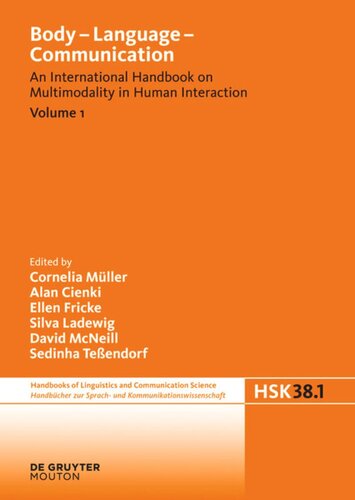

Most ebook files are in PDF format, so you can easily read them using various software such as Foxit Reader or directly on the Google Chrome browser.
Some ebook files are released by publishers in other formats such as .awz, .mobi, .epub, .fb2, etc. You may need to install specific software to read these formats on mobile/PC, such as Calibre.
Please read the tutorial at this link: https://ebookbell.com/faq
We offer FREE conversion to the popular formats you request; however, this may take some time. Therefore, right after payment, please email us, and we will try to provide the service as quickly as possible.
For some exceptional file formats or broken links (if any), please refrain from opening any disputes. Instead, email us first, and we will try to assist within a maximum of 6 hours.
EbookBell Team

4.7
66 reviewsVolume I of the handbook presents contemporary, multidisciplinary, historical, theoretical, and methodological aspects of how body movements relate to language. It documents how leading scholars from differenct disciplinary backgrounds conceptualize and analyze this complex relationship. Five chapters and a total of 72 articles, present current and past approaches, including multidisciplinary methods of analysis. The chapters cover:
I. How the body relates to language and communication: Outlining the subject matter,
II. Perspectives from different disciplines,
III. Historical dimensions,
IV. Contemporary approaches,
V. Methods.
Authors include: Michael Arbib, Janet Bavelas, Marino Bonaiuto, Paul Bouissac, Judee Burgoon, Martha Davis, Susan Duncan, Konrad Ehlich, Nick Enfield, Pierre Feyereisen, Raymond W. Gibbs, Susan Goldin-Meadow, Uri Hadar, Adam Kendon, Antja Kennedy, David McNeill, Lorenza Mondada, Fernando Poyatos, Klaus Scherer, Margret Selting, Jürgen Streeck, Sherman Wilcox, Jeffrey Wollock, Jordan Zlatev.
72 chapters by leading international scholars ranging from cognitive sciences to sign linguistics